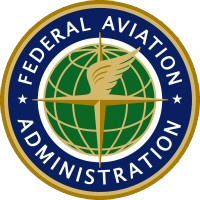Draft AC's On Tap
By Donna Speidel

The FAA's two principal airfield marking advisory circulars (AC) are being revised. AC 150/5340-1 - Standards for Airport Markings, and 150/5370-10 - Standards for Specifying Construction of Airports, are in "draft" and we'll hopefully see both released by September 30, 2018. There are significant proposed changes related to airport markings, so let's unpack it to see what's on tap.
 150/5340-1M - Standards for Airport Markings
150/5340-1M - Standards for Airport Markings
This draft guidance has been out since early 2017, and industry comments were due back in May 2017. It's undergone extensive economic impact review and we're hoping to see it released in the next month. Standards related to what individual airfield markings are, when and where they're used, and how they're configured are all in the 5340. The following are a few of the primary changes:
- Preformed Thermoplastic - Still approved for use on airfields. A life cycle cost analysis of the material should be conducted and submitted if the material is specified. Further clarifies this material is "not to be used on runways because of the significantly lower friction readings recorded as compared to dry pavement."
- Pattern B Holding Position Markings in Runway Approach-Departure Areas - On taxiways where aircraft may taxi under landing/departing aircraft, the standard marking to use to delineate the runway protection zone will be a Pattern B, formerly known as an ILS, holding position marking. In my experience, I have commonly seen Pattern A holding position markings used in this situation, and occasionally accompanied by enhanced taxiway centerlines despite no actual intersection with a runway. The use of the Pattern B holding position marking is intended to reduce air traffic control and pilot workloads in the long run.
- No-Taxi Islands - Designed to enhance safety on taxiway routes. There are many possible applications; however, the AC does discuss common taxiing situations and existing airfield layouts in which these enhancements may be of benefit including exiting aprons, taxiing between aprons and entrance taxiways, and entering runways.
This draft guidance was released in November 2017 and it's my understanding the document is currently in legal review, with the hope it will be published by September 30. The 5370 is the new construction AC that touches on everything from milling to different types of pavements and sealants to markings and lights... it runs the gamut. Per discussions with its primary authors at the FAA, Greg Cline and Doug Johnson, their mission was to improve three concepts in all phases of construction:
- The quality of materials
- The quality of construction and application
- The quality of maintenance
Of the 400+ page document, ten (yes, 10) pages address Runway and Taxiway Markings under Item P-620 on a new construction project. However, within those few pages, big strides towards higher standards were proposed for this little niche industry. Here are a few of the suggested revisions:
620-3.2 - Equipment. "[Painting equipment] shall produce an even and uniform film thickness and appearance of both paint and glass beads at the required coverage and shall apply markings of uniform cross-sections and clear-cut edges without running or spattering and without over spray. The marking equipment for both paint and beads shall be calibrated daily."
620-3.3 - Surface Preparation. "Preparation of pavement to remove existing markings. Existing pavement markings shall be removed by rotary grinding or by other methods approved by the Engineer minimizing damage to the pavement surface. The removal area may need to be larger than the area of the markings to eliminate ghost markings. After removal of markings on asphalt pavements, apply a fog seal or seal coat to 'block out' the removal area to eliminate 'ghost' markings.
620-3.5 - Application. CAUTION: Prior to reopening pavements at Part 139 airports verify that all markings comply with Part 139 requirements. Temporary markings not in compliance with AC 150/5340-1 will require a NOTAM regarding any non-standard marking be issued. For example, temporary markings without beads.
620-3.7 - Control Strip. "Prior to the full application of airfield markings, the Contractor shall prepare a control strip in the presence of the Engineer. The Contractor shall demonstrate the surface preparation method and all striping equipment to be used on the project. The marking equipment must achieve the prescribed wet film thickness of paint and population of glass beads (per Table 1) that are properly embedded and evenly distributed across the full width of the marking. Prior to acceptance of the control strip, markings must be evaluated during darkness to ensure a uniform appearance.
The FAA's Airport Engineering Division is focused on quality during construction, and we are encouraged by the progress to improve airfield markings through stronger procedures, more concise specifications. Now it's up to the engineering community to implement and enforce them to realize the benefits of the higher standard. Once the draft is made official, we will revisit and report on it.
Jump to another article:
Summer 2018 Newsletter | Draft AC's On Tap | The Low Bidder's Low Bidder | Binge Painting | What's New?
